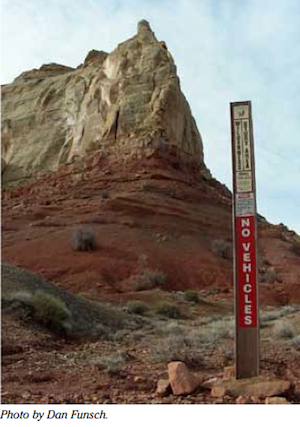Forest Service starts “minimal roads” planning
Effects of Noise on Wildlife, News, Vehicles, Wildlands Add commentsUnbeknownst to most of us, a long-term National Forest Service approach to managing roads on its millions of acres of non-wilderness lands has been waiting for activation since January 2001, when the Forest Service finalized a plan for the long-term management of their oversized and under-maintained road system. That plan basically directed the agency to identify an ecologically and fiscally sustainable minimum road system that would meet resource management and recreational access needs. The plan projected that the agency might reduce the overall road system by more than 30%, and that as a result “unroaded” acreage might increase by up to 15% nationally. Wildlands CPR fills us in on the details with this web post and a real nice pdf version of their magazine feature on the story.

A combination of political neglect and other factors has meant that even as the “minimum road system” goal remained on the books, and was part of the Travel Management Plan process that many forests engaged in over the past decade, implementation of the idea has never happened.
Now that has changed, with the release in late 2010 of a directive from the Forest Service Chief. The guidance memo directs all national forests to identify, through a science-based analysis, an ecologically and fiscally sustainable minimum road system by 2015.
In addition to the five years it will take to conduct this analysis nationally, it will likely take decades to actually implement the minimum system on-the-ground. But the plans developed through this process will, over the long-term, create a blueprint for future road maintenance and decommissioning investments, including Legacy Roads and Trails Remediation Initiative funding.
For those interested in large landscape connectivity for wildlife, this initiative presents an opportunity to reduce road densities as well as protect and restore linkages and core habitat. For those interested in clean water and fisheries, it is an opportunity to improve water quality and watershed health. And for those interested in fiscal responsibility, it is an opportunity to identify a road system that the Forest Service can afford to maintain.
